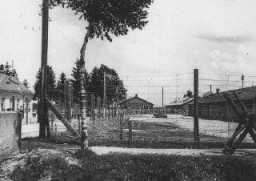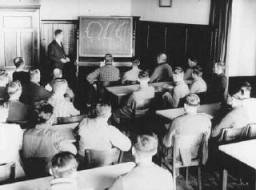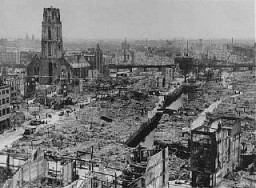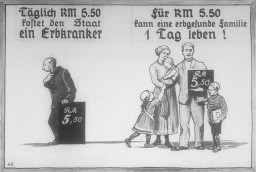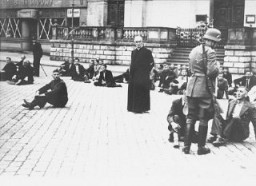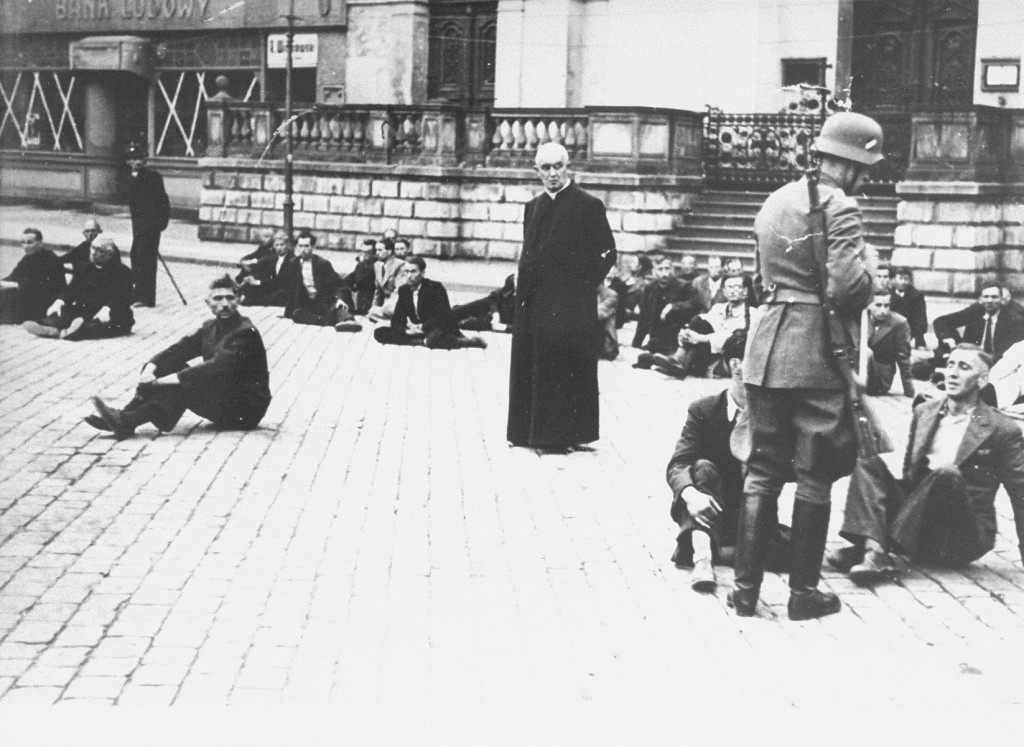
German Rule in Occupied Europe
Nazi Germans ruled with extreme brutality in eastern Europe. In western Europe, their policies were milder. Across Europe, people resisted the Nazis in various ways and to varying degrees.
German Rule in Occupied Europe Germany planned to annex most of the conquered eastern territories after they had been Germanized. While some areas were to serve as reservations for forced laborers, most were to be resettled by German colonists. Most German plans for resettlement were postponed until the end of the war. Meanwhile, the regions were ruthlessly exploited for the German war effort: foodstuffs, raw materials, and war stocks were confiscated. Members of the local population were drafted for forced labor in war industries or military construction projects. Millions more were deported to Germany to be used as forced laborers in German war industries or agriculture.
German rule in Poland was extremely harsh. German authorities regarded the Polish population as a supply of forced laborers. A campaign of terror was directed against members of the Polish intelligentsia, many of whom were killed or sent to the camps. Polish teachers, priests, and cultural figures, who might form the core of a resistance movement, were especially targeted for persecution. The Germans destroyed Polish cultural and scientific institutions and plundered national treasures. Poles were supplied only with starvation rations, as the bulk of the country's food was confiscated by the Germans for their home front.
In occupied western Europe, far milder policies were followed. "Germanic" countries like the Netherlands were ultimately slated to become part of Germany. Other countries, especially France, were to be kept dependent on Germany.
As a result of the wartime German policies, resistance movements sprang up throughout Europe. Members of armed, irregular forces fighting the Germans in occupied areas of Europe were called partisans. They harassed the German civilian and military authorities across Europe, engaging in sabotage, demolition, and other diversionary attacks.
Key Dates
May 16, 1940
Nazis order Polish leaders to be killed
Hans Frank, the Nazi administrator of occupied Poland, orders the arrest and execution of Polish leaders (politicians, state officials, professionals, intellectuals—even priests). The Nazis seek to terrorize the Polish population and prevent them from resisting Nazi policies. Thousands of Poles are arrested and massacred. Despite the terror, the resistance movement in Poland continues.
June 10, 1942
Germans destroy small Czech town
In reaction to the assassination of Reinhard Heydrich (the governor of Bohemia and Moravia) by Czech partisans, the Germans decide to destroy Lidice, a small village outside of Prague. Many of the residents are killed. Almost 200 women are deported to the Ravensbrueck concentration camp in Germany and almost 100 children to other institutions. The town is then razed to the ground, the houses burned or demolished.
March 24, 1944
SS men massacre Italians near Rome
Units of the SS (the elite guard of the Nazi state) shoot more than 300 Italians in the Ardeatine Caves, south of Rome, in reaction to a partisan attack on German soldiers. Ten hostages are shot for every German soldier killed. The SS blow up the caves after the massacre.
June 10, 1944
SS unit massacres villagers in France
The entire population of Oradour-sur-Glane, a small French village in southern France, is massacred by an SS unit. More than 600 men, women, and children are forced into the village church, which is then set ablaze. There are no survivors. Following the Allied landings in Normandy, France, there was an increase in anti-German partisan activity in occupied France. The massacre of men, women, and children in Oradour-sur-Glane was undertaken ostensibly in retaliation for such partisan activity.



